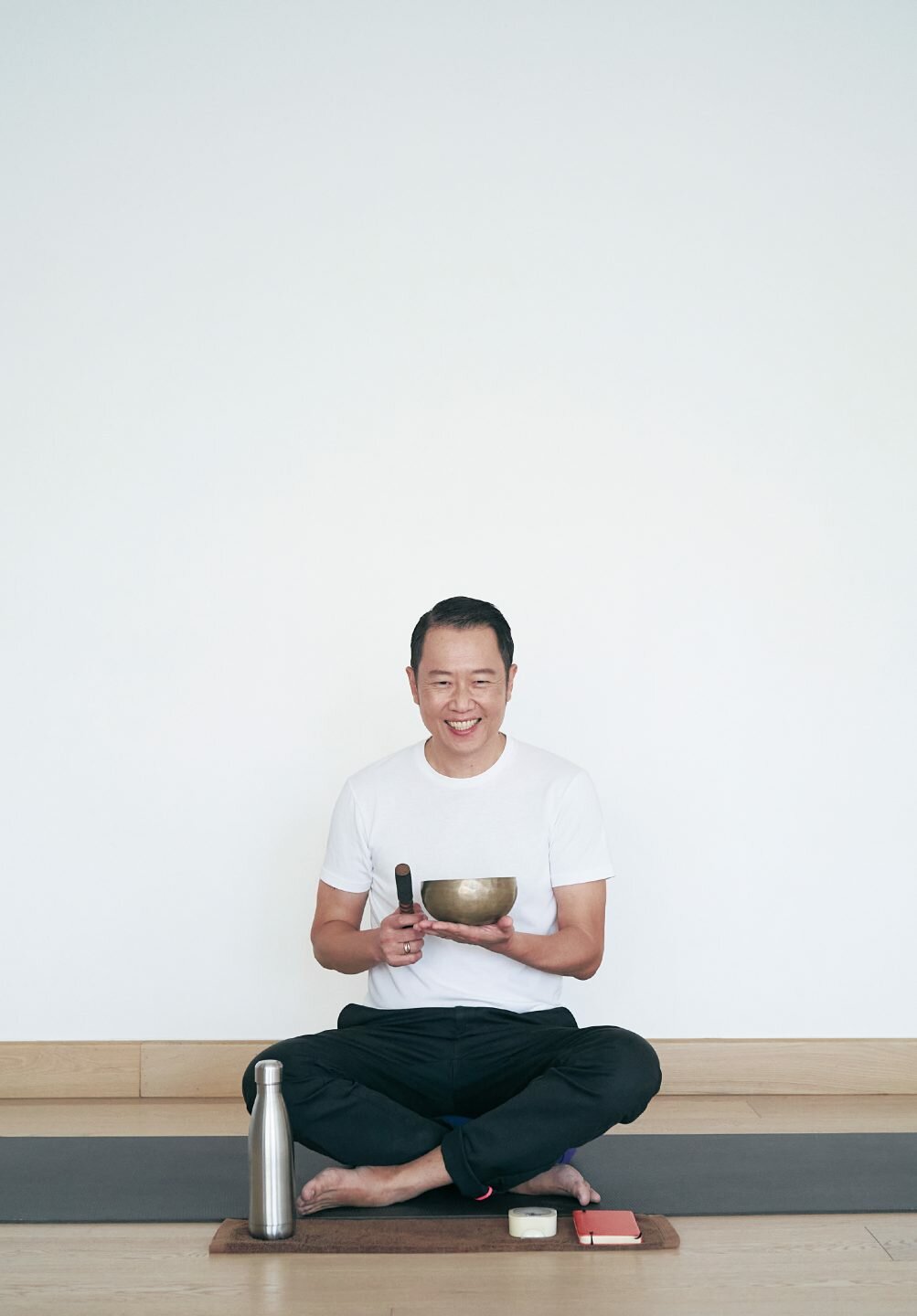Exercise, eat well and get enough sleep — that’s what we’ve been told to do to take care of our health, says Tan Cheen Chong. But we often neglect to care for our brain, which this mindfulness teacher at Como Shambhala Urban Escape reminds is “the master organ”. “The brain doesn’t rewire instantly. It needs time to integrate our daily experiences with past insights and beliefs.”
Cheen, as he’s affectionately known among his students, is also behind nowyourmind, where he’s taught mindfulness since 2014. His journey began after he suffered a mental breakdown following his father’s death. This led him to a 10-day meditation retreat that (to his surprise) helped him overcome a 10-year battle with food allergies.
Mindfulness simply means awareness, he shares; it refers to the state and habit of being conscious of what’s happening both within and around us. Cheen’s classes aim to help us turn mindfulness into a mental habit so we can observe how the mind works, complete with its biases, stereotypes, prejudices and judgements, and choose actions congruent with our values.
He is also the president of Association for Persons with Special Needs (APSN), which provides special education for those with mild intellectual disability. “If I were to link giving back to mindfulness, it’d be the dimension of gratitude. I’ve been fortunate in this lifetime and want to carve out time to give back.”
What is mindfulness and how has it helped people better cope with the stresses brought on by the Covid-19 pandemic?
Mindfulness requires paying attention to our experiences right now. While city living does offer creature comforts and conveniences, do we notice and appreciate fully our surroundings, our relationships, our possessions? Can we choose to focus on the present instead of trying to do several things at once?
The pandemic is a stressful time for most of us but some see it as an opportunity to reassess their priorities. There are people who fear contracting the virus; there are others who stockpile food because they are worried. Mindfulness serves as an internal barometer during this time. Many are attending my classes to learn how to cope and become more resilient. You start to observe your thoughts and feelings: Are you worried? Where do you feel worry in your body? What is within your control that you can act on (like wearing a mask or disinfecting your hands)? For things that are beyond your control, can you make space for anxiety or frustration while acknowledging the fact that we are living with a pandemic?
You’re part of the specialist panel at Como Shambhala, which offers programmes and consultations for those who want to pursue a holistic wellness journey. What is so difficult about practising mindfulness?
We constantly feel we don’t have enough time in a day to do the things we want or need to do. There’s a lot going on in our lives; lots of distractions and deadlines. We pack in a lot in a day and juggle multiple roles, personas and responsibilities. What feels good in the short-term, like binge-watching Netflix into the early hours of a workday, may not lead us towards the life we want in the long-term, such as having a healthy lifestyle. Mindfulness reminds us to find and act on that balance, and experience contentment or gratitude for that balance today.
Of course, mindlessness happens to everyone, myself included. Mindfulness requires a continuous practice of self-care. We experience a spectrum of emotions; if we feel bad after lashing out at our child, do we notice our regret and self-judgement. With that informing us, can we watch our irritation the next time it happens and choose a different response? While practising mindfulness improves mental wellness, many of my students at Como Shambhala also commit to a holistic wellness lifestyle; they incorporate pilates for strength and alignment, and consult periodically with our naturopath doctor to address health concerns such as fatigue and eczema.
Some students require a different approach. I have a hyper-active teenager who fidgets and moves a lot during class. For one session, we visited a supermarket nearby instead. When we reached a row of products, I guided him to focus using his sense of sight and smell. It was a strange practice for him, but I got the point across.
You also conduct mindfulness courses for children. Why is this important?
Mindfulness is a life skill. Adults are experiencing some form of stress not just from work but from the various demands and realities of modern life. We can’t wish away such unpleasant or unwanted feelings, so we find ways to cope in the short-term — some are healthy, others less so. It’s the same with our kids: When they are taught to swim, and thrown into the deep end of the pool, can they tread water and swim to safety? We can add this “superpower” to their toolbox of life skills.
What are traits essential to excelling in what you do?
It goes without saying that a teacher needs to know the subject competently, if not passionately. I complemented my teacher training journey with courses in brain science. The neuroscience terms were intimidating at first but over time, I found it fascinating to learn about the mechanistic world between our ears. As a mindfulness teacher, I focus on guiding a practice coherently; when the instructions are clear, students can hear and follow better. I’m still finding ways to be succinct.
One thing you do every day as self-care?
Taking the time to brush my teeth, paying attention to the brushing sensations on my teeth and gums, tasting and noticing the scent of the toothpaste, and flossing slowly. This is not about being fanatical about oral health but about being in the moment. When brushing teeth, brush teeth.
This is part of our series on Grit Before Glitter. For the full story, click here.
The story first appeared in our September 2020 issue of A Magazine.
